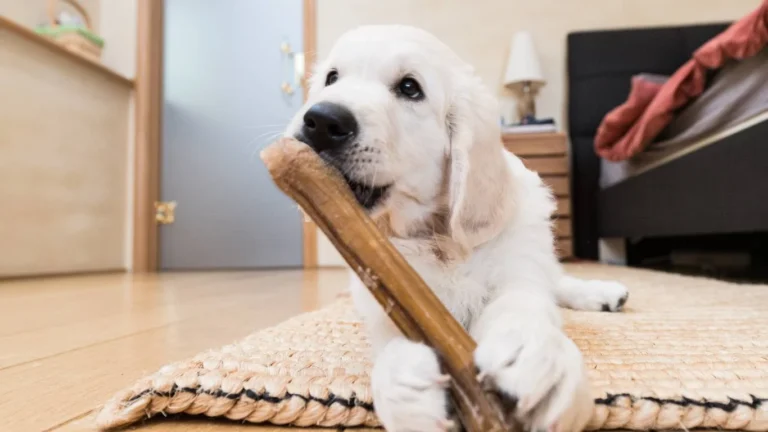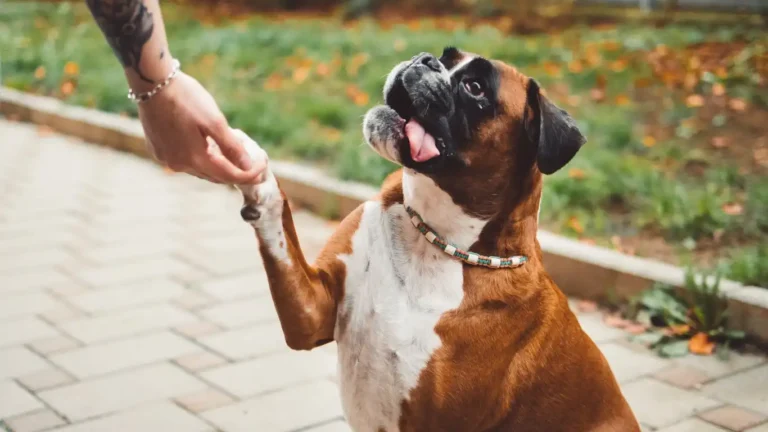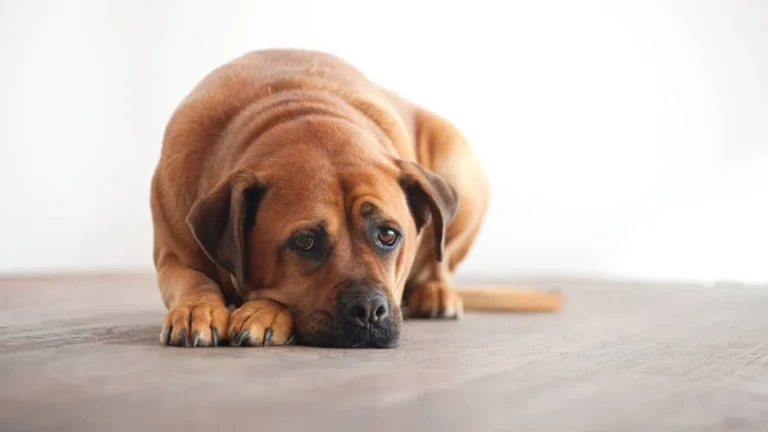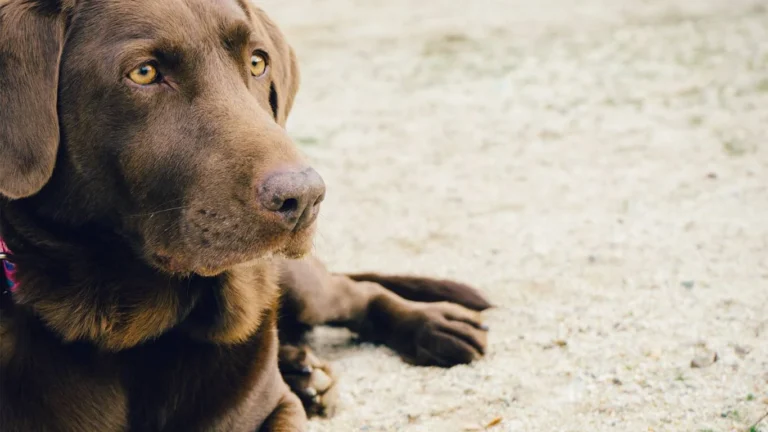What to Do If Your Dog Suddenly Collapses: Quick Action Guide
If you’re a dog owner, you know how unsettling it can be when your furry companion suddenly collapses. It’s a terrifying moment, and your mind might race with questions about what’s going on. As a veterinary assistant with a nutrition focus, I’ve seen plenty of these situations in my practice, and I can assure you that there are many different reasons why a dog might collapse. Understanding what to do if your dog suddenly collapses could save their life in the critical moments right after the event. This guide will walk you through those first steps you should take and provide important insights into potential causes of collapse in dogs.
What To Do If Your Dog Suddenly Collapses
When your dog collapses, it’s essential to stay calm and act quickly. Panicking won’t help your dog, and it could delay your ability to provide the appropriate care. Here’s what you should do if this happens:
1. Assess the Situation
The first step is to assess the situation. Take a deep breath and make sure you’re safe and in control of the situation. Look for any immediate dangers, such as traffic or other pets, that could make the situation worse. Then, check if your dog is still breathing and has a heartbeat. If they’re not breathing, you might need to perform CPR. If you’re unsure how to do CPR on a dog, it’s a good idea to take a pet first aid course in advance. These skills can be invaluable in life-or-death situations.
2. Check for Signs of Injury
After you confirm that your dog is breathing, carefully check for signs of any physical injuries. Look for bleeding, broken bones, or signs of trauma. If you see any of these signs, avoid moving your dog too much, as it could worsen their condition. Instead, try to gently keep them as still as possible and get them to the vet as quickly as you can. If there’s no sign of injury but your dog remains unresponsive or isn’t recovering, it’s even more critical to get to the vet for further evaluation.

3. Stay Calm and Contact a Veterinarian
Once you’ve checked for injuries and confirmed your dog’s breathing, the next thing you need to do is call your veterinarian or an emergency animal hospital. They will ask you important questions to help determine the severity of the situation and advise you on the next steps. Some veterinary offices offer emergency consultations, so it’s helpful to have their number saved in your phone in case of an emergency.
While you wait for veterinary help, try to keep your dog as comfortable as possible. If they’re lying on their side, make sure their airway is clear and that they’re not in a position that could restrict breathing. If they’re alert, keep them calm and still until help arrives. Remember, your dog’s health and safety should be your top priority, so it’s important not to waste time.
Potential Causes of Sudden Collapse in Dogs
Now that you know the immediate actions to take when your dog collapses, let’s dive into some of the potential causes. There are numerous reasons why a dog may suddenly collapse, and understanding these can help you be better prepared to handle the situation. Below are some common causes:
1. Heart Issues
Heart disease is one of the leading causes of sudden collapse in dogs. Conditions like arrhythmias (irregular heartbeats) or heart failure can cause your dog to suddenly faint or collapse. If you notice your dog collapsing during or after exercise or excitement, it could be related to a heart condition. It’s important to take your dog to the vet regularly for heart health check-ups, especially as they age. Early detection of heart disease can help manage the condition and improve your dog’s quality of life.
2. Seizures
Seizures can cause dogs to collapse, fall to the ground, and even convulse. If your dog is having a seizure, they may also display other symptoms, such as drooling, loss of control over their body, and unresponsiveness. Seizures are often caused by underlying conditions like epilepsy, brain tumors, or liver disease. If your dog has a seizure, it’s critical to keep them safe by ensuring they won’t hurt themselves during the event, but do not try to restrain them.
3. Heatstroke or Overheating
Dogs can easily overheat, especially during hot weather or after exercise. Heatstroke is a serious condition where a dog’s body temperature rises dangerously high. It can cause them to collapse, become disoriented, or even lose consciousness. Preventing heatstroke involves keeping your dog cool and hydrated, especially during the summer months. If your dog collapses due to overheating, immediate cooling and veterinary care are essential.

4. Low Blood Sugar (Hypoglycemia)
Some small breed dogs or puppies are especially prone to low blood sugar, which can cause sudden collapse. If your dog hasn’t eaten in a while, they may experience a drop in their blood sugar levels, leading to weakness, dizziness, or collapse. In such cases, giving your dog a small amount of honey or a sugar solution can help raise their blood sugar and stabilize their condition until you can get to the vet.
When to Seek Immediate Veterinary Help
If your dog collapses and doesn’t respond to your efforts to revive them, it’s crucial to seek immediate veterinary attention. Even if your dog recovers quickly, a collapse could be a sign of a serious underlying condition that requires professional evaluation. It’s always better to err on the side of caution and have your dog checked out by a veterinarian.

Additional Causes of Sudden Collapse in Dogs
As we continue to explore the reasons your dog may suddenly collapse, it’s essential to consider a wide range of possibilities. Many owners may not immediately think of some of these causes, so I want to shed some light on a few that are often overlooked but still quite common. In my years working as a veterinary assistant, I’ve witnessed many situations where the underlying cause was something unexpected. Here’s what else to look out for:
1. Blood Loss or Internal Bleeding
Dogs can collapse due to blood loss, whether from an external wound, internal bleeding, or a ruptured organ. Internal bleeding might not always be visible to the naked eye, and in some cases, you may not even know your dog has been injured until they collapse. Conditions like bleeding tumors or gastrointestinal issues could lead to sudden, severe blood loss that causes your dog to lose consciousness.
If your dog collapses and there are no obvious external injuries, it’s important to consider the possibility of internal bleeding. Symptoms to watch for include pale gums, weakness, or a rapid, weak pulse. Internal bleeding is a medical emergency, so prompt action is crucial. If you notice any of these symptoms, get your dog to the vet immediately.
2. Stroke
Yes, dogs can have strokes too! While it’s not as common as some of the other causes we’ve discussed, strokes can cause a dog to suddenly collapse. A stroke happens when there’s a blockage or rupture in the blood vessels in the brain, leading to loss of function on one side of the body, disorientation, or even collapse. If your dog collapses and shows signs of uncoordinated movements, head tilting, or confusion, a stroke could be the cause.
When a stroke occurs, time is of the essence. Immediate veterinary intervention is required to stabilize your dog and provide the best possible treatment. Although some strokes may result in permanent damage, early detection and care can help improve your dog’s chances of recovery.
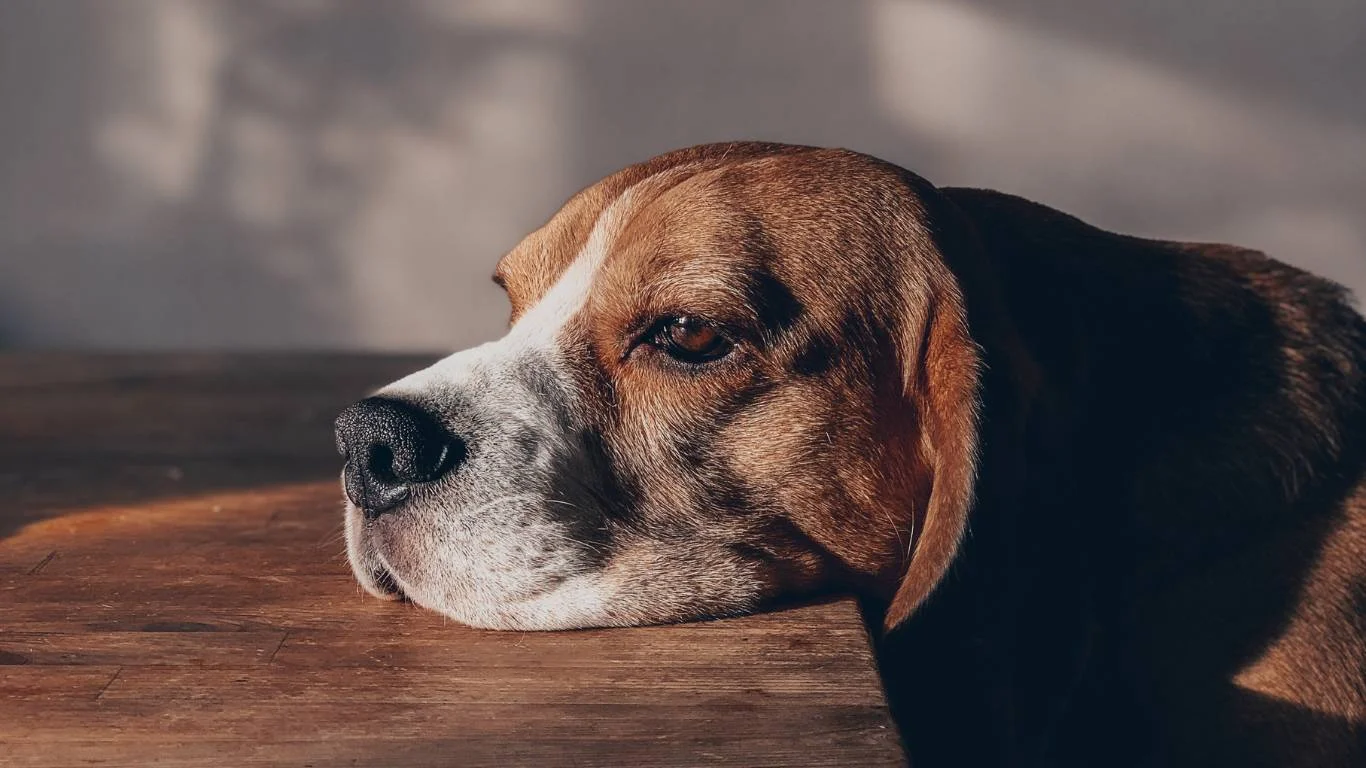
3. Toxins or Poisons
Accidental poisoning is another potential cause of sudden collapse in dogs. Dogs tend to be curious creatures, and they may ingest harmful substances such as chemicals, plants, or human medications that can cause immediate and severe symptoms. Common poisons that lead to collapse include antifreeze, certain types of chocolate, rat poison, and some plants like lilies or oleanders.
If you suspect that your dog has ingested something toxic, it’s important to act quickly. Contact your vet or an emergency animal hospital immediately. The sooner you seek help, the better the chances are for your dog’s recovery. It’s a good idea to have the number of a pet poison hotline saved on your phone in case of emergencies.
4. Respiratory Issues
Respiratory issues can also lead to a sudden collapse. For example, a dog with an untreated upper respiratory infection, pneumonia, or even an allergic reaction could collapse due to a lack of oxygen. If your dog is having trouble breathing or is showing signs of distress such as wheezing, panting excessively, or drooling, it could be a sign of a serious respiratory issue.
Dogs with brachycephalic (flat-faced) breeds, such as Bulldogs and Pugs, are more prone to respiratory issues. However, any dog with underlying respiratory problems or allergies could collapse if the condition worsens. If your dog is struggling to breathe, seek veterinary care immediately to avoid further complications.

How to Prevent Collapses in the Future
While we’ve covered a lot about what to do if your dog suddenly collapses, it’s equally important to think about prevention. As a pet parent, it’s vital to stay proactive and ensure that your dog is as healthy as possible. Some of the conditions that lead to collapse are preventable with proper care and attention to your dog’s overall health. Here are some things you can do to minimize the chances of a collapse:
1. Regular Vet Check-ups
The best way to prevent unexpected health issues is through regular veterinary visits. During these check-ups, your vet can monitor for early signs of conditions that could lead to collapse, such as heart disease, tumors, or respiratory problems. In addition, they can provide vaccinations and discuss preventive treatments for parasites like ticks, fleas, and heartworms that can also contribute to health issues.
Personally, I’ve seen many cases where early detection during a routine check-up helped prevent a serious collapse later on. For example, a dog with an early heart condition can be managed with medication and lifestyle changes, preventing an unexpected collapse from happening.
2. Monitor Your Dog’s Diet
As a Veterinary Assistant with a focus on nutrition, I can’t stress enough how important a proper diet is for your dog’s overall health. A balanced diet helps to maintain a healthy weight, support proper heart function, and ensure your dog gets all the necessary nutrients for good health. Overweight dogs are more likely to suffer from health issues that could lead to a collapse, such as heart disease, diabetes, and joint problems.
Make sure you’re feeding your dog high-quality food that meets their specific needs. Puppies, adult dogs, and senior dogs have different nutritional requirements, so be sure to consult your vet for the best dietary recommendations. If your dog has any food allergies or sensitivities, avoid those ingredients to prevent potential reactions.
3. Avoid Overexertion
Just like humans, dogs can experience physical exhaustion, and pushing them too hard during exercise can lead to collapse. While regular exercise is vital for your dog’s health, be mindful of the weather conditions and your dog’s limits. Hot weather can lead to heatstroke, and overexertion in young puppies or elderly dogs can cause serious strain on their hearts and joints.
Make sure your dog gets plenty of playtime and exercise, but be careful not to push them too hard. If your dog is prone to certain conditions like heart disease or joint issues, consult your vet on an appropriate exercise routine that will keep them healthy without risking a collapse.

Long-Term Management and Recovery After a Collapse
Once your dog has experienced a collapse, it’s important to focus on their recovery and long-term health management. Depending on the cause of the collapse, your dog may need extended care, lifestyle changes, and regular monitoring to ensure that they stay healthy and strong moving forward. As a veterinary assistant, I’ve worked with many pet parents who faced similar challenges, and I’ve seen firsthand how consistent care can make a world of difference in your dog’s recovery journey.
1. Follow-Up Veterinary Care
After your dog’s initial treatment, whether it was for heart problems, toxins, or another condition, regular follow-up appointments are key to ensuring they recover well. These follow-ups allow your vet to track your dog’s progress, adjust any medications if needed, and monitor their overall health. Regular blood tests, x-rays, or heart scans might be necessary depending on the underlying cause of the collapse.
For example, I’ve seen cases where dogs with heart conditions required regular echocardiograms to monitor how well their heart was functioning. With proper management, many dogs can live a happy, full life despite these challenges, but ongoing veterinary visits are vital for early intervention if their condition worsens.
2. Adjusting Your Dog’s Lifestyle
Following a collapse, you may need to make some lifestyle changes for your dog. For example, if your dog had a heart issue or a respiratory problem, limiting strenuous activity or making adjustments to their diet and environment could be necessary to prevent further health risks. Keeping your dog calm and avoiding stressful situations can help reduce the strain on their body.
In my experience, one of the most impactful changes that pet parents can make is adjusting exercise routines. You don’t want to overdo it, especially if your dog is recovering from a collapse due to heart disease or another serious condition. Gentle walks and low-impact play sessions are ideal. Be sure to follow your vet’s advice regarding the level of activity that’s safe for your dog’s specific condition.

How to Help Prevent Future Collapses
While it’s not always possible to predict when a collapse might happen, there are steps you can take to reduce the likelihood of it occurring in the future. Prevention starts with being proactive about your dog’s health and staying on top of routine care. Let’s look at some of the strategies that can make a difference in keeping your dog safe and healthy:
1. Proper Nutrition and Weight Management
One of the most important things you can do for your dog’s health is ensuring that they maintain a healthy weight. Being overweight or obese puts unnecessary stress on your dog’s heart, joints, and overall health, increasing the risk of conditions that could lead to collapse. Ensure that your dog is eating high-quality food that’s tailored to their age, breed, and activity level. Consult your vet about portion sizes and specific dietary needs.
For instance, I’ve worked with several pet parents whose dogs struggled with obesity, and through careful monitoring of food intake and an adjusted exercise plan, their dogs saw dramatic improvements in overall health and energy levels. Proper weight management not only helps prevent collapses but also improves your dog’s quality of life.
2. Stay Ahead of Heart Health
Heart disease is a leading cause of collapse in dogs, particularly in older pets. Preventing heart issues involves regular veterinary check-ups that focus on your dog’s heart health. As I mentioned earlier, heart disease in dogs often develops slowly, so it’s important to catch it early. Some signs of heart disease, like coughing, labored breathing, or difficulty exercising, may not be immediately obvious, so regular screenings can help detect heart problems early.
If your dog is diagnosed with heart disease, there are medications and lifestyle changes that can help manage the condition. In some cases, heart disease can be well-controlled with medication, allowing your dog to live a relatively normal life. However, without early intervention, the condition can lead to serious complications, including sudden collapse.
3. Avoid Exposure to Toxins
Preventing poisoning is another major aspect of keeping your dog safe. Toxins can cause sudden collapses, and dogs are often more vulnerable to poisoning than we realize. Keeping dangerous substances, such as household cleaners, chocolate, and certain plants, out of reach is essential. In my experience, accidental poisonings are more common than you might think. As a preventive measure, you should familiarize yourself with common household toxins that are harmful to dogs. Some of these include antifreeze, certain human medications, and foods like grapes and raisins.
If you believe your dog has ingested something toxic, contact your vet immediately. Many toxins can be neutralized if treatment is administered quickly, so time is of the essence. The good news is that many pet poison control centers are available 24/7, making it easier for pet parents to get the help they need right away.

References
- American Kennel Club
- American Veterinary Medical Association
- American Society for the Prevention of Cruelty to Animals
- Pet Poison Helpline
Disclaimer
The information provided in this article is for educational purposes only and should not be substituted for professional veterinary advice. Always consult your veterinarian for diagnosis and treatment options for your pet. In case of an emergency, contact your veterinarian or an emergency animal hospital immediately. While I have experience in veterinary assisting, I am not a licensed veterinarian, and my recommendations are based on general practices and common knowledge within the veterinary field.
